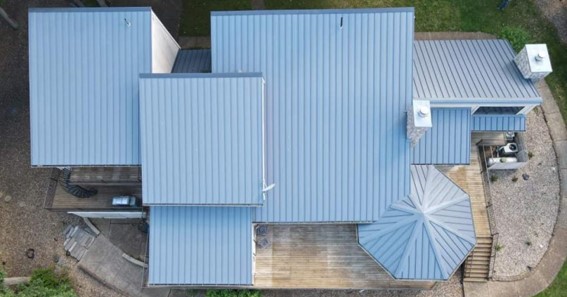Are you in need of a roofing contractor for new roof installation or repair? You’ve come to the right place. For the best roofing contractor Yacolt WA click here. Metal roofs are becoming increasingly popular due to longevity, energy efficiency, and low cost. One question lingers in the minds of potential metal roof adopters: does a metal roof make your house hotter? The answer is complex! Several factors make a metal roof warm or cool; we will look at them in this article.
The Science Behind Heat Transfer
Heat transfer is a scientific phenomenon in which energy moves from one object to another due to temperature differences. In this case, the energy we’re talking about is sunlight hitting your roof and transferring heat inside your home. The traditional asphalt shingle roof absorbs much of that heat, causing your house to become hot and stuffy during the summer.
This is where metal roofs come in handy. Metal roofs are coated with special reflective paint that reflects much of that solar energy into the atmosphere instead of letting it get absorbed by your home’s walls and ceilings. This keeps the inside of your home much cooler than if you had an asphalt shingle roof installed instead. Additionally, metal roofs deflect wind more effectively than other materials, such as wood or composition shingles, further reducing their thermal load on the building envelope and helping keep things cool indoors.
Click here – Happy, How The Latest Technology Is Changing Cosmetic Dentistry
Insulation Matters
Insulation is the first factor to consider when assessing whether or not a metal roof can make your house hotter. Generally speaking, the better insulated your home is, the less likely it is that heat will build up inside—regardless of what type of roof you have. This means that if you want your home to stay cooler during the summer, it’s important to invest in good-quality insulation.
Heat Reflectivity
The reflectivity of a material refers to its ability to repel heat rather than absorb it. Darker colors absorb more heat, whereas lighter colors reflect more heat away from home. For this reason, light-colored metal roofs tend to keep homes cooler than dark-colored ones. However, reflective coatings are also available for darker-colored roofs, which can help reduce the heat absorbed by the material.
On top of this, some metal roofs, such as aluminum and copper, have natural reflectivity qualities that help keep your home cooler without an additional reflective coating. So if you’re looking for maximum cooling power from your metal roof, these may be the best options!
Ventilation System
Another important factor when considering whether a metal roof makes your house hotter is ventilation. Proper ventilation will allow hot air to escape inside your attic while circulating cool air throughout your home. Proper ventilation also reduces moisture buildup, which can sometimes lead to mold growth or wood rot. A good ventilation system should include ridge vents, soffit vents, gable vents or turbine vents installed along with adequate insulation materials such as spray foam or blown-in insulation to maximize airflow throughout the attic space and reduce excess heat retention during summer months.
How To Combat Heat With a Metal Roof
If you want to install a metal roof but don’t want to worry about it making your house too hot, there are several things you can do to combat any potential heat retention problems. For example, installing an insulation layer under the metal can help keep the interior of your home cooler by preventing some of the heat transfer between the outside and inside of your home. Consider using light-colored paint or coating on top of the metal to help reflect more sunlight away from your home instead of absorbing it into your house’s structure. Finally, if you live in an area that has long periods of direct sunlight, adding additional ventilation or skylights can help pull warm air out of your attic space and keep temperatures down inside as well.
Click here – Is It Worth Paying For A Financial Advisor?
Metal Roofs vs. Asphalt Shingles
So how do these two materials compare when it comes to keeping a house cool? Asphalt shingles absorb up to 90% of solar radiation, whereas metal roofs can reflect up to 75%. That’s a huge difference! Additionally, metal roofs typically last longer than asphalt shingles, so you won’t have to worry about replacing them as often and can enjoy longer-term cooling benefits for years.
Whether or not a metal roof makes your house hotter depends largely on how well-insulated it is and what color/materials are used for the roof itself. Light-colored materials tend to be more reflective and, therefore, better at deflecting heat away from home. At the same time, darker colors absorb more heat and can lead to higher temperatures inside the house during summer. Additionally, certain metals such as aluminum and copper have natural reflective properties that can help reduce heat absorption even further—so these may be worth considering if you’re looking for maximum cooling power from your new metal roof!

